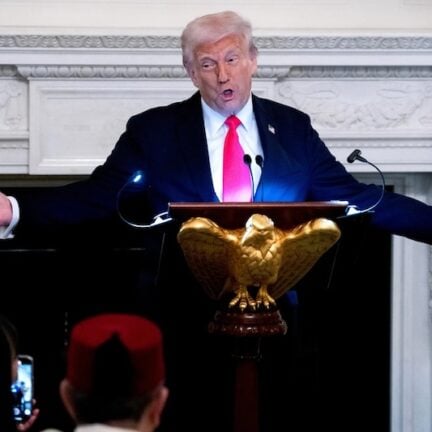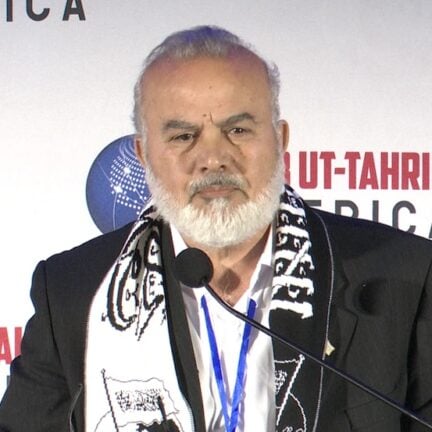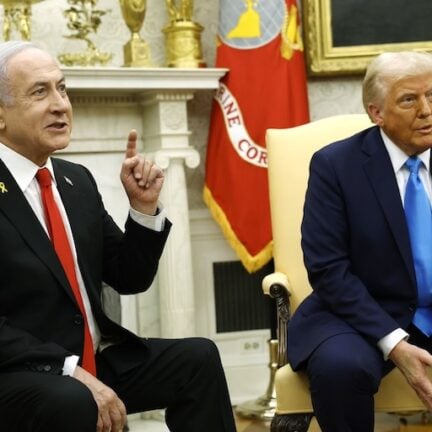Question:
Tension has escalated once again between Afghanistan and Iran due to a long-standing dispute over the distribution of water from the Helmand Dam, which is a major water source for both countries. According to Deutsche Welle (DW), on its website on 1/6/2023 (Iran and the Taliban exchanged heavy gunfire last week on the Islamic Republic’s border with Afghanistan, killing and wounding troops while sharply intensifying rising tensions between the countries. Both sides accused each other of shooting first. The clash came amid an escalating dispute between Kabul and Tehran over the Helmand River, which is a vital source of water for both sides). Al Jazeera reported on its website on 1/6/2023, citing the Russian newspaper Izvestia (the relations between Iran and the Taliban government have witnessed various tensions due to Tehran’s support for the Northern Alliance opposing the Taliban during the civil war in Afghanistan, in addition to religious and political differences between the two countries. Not to mention the conflict over the water resources of the Helmand River that flows into Lake Hamun in Iranian territory. According to the agreements concluded in 1973, Afghanistan is obliged to supply Iran with 850 million cubic meters of water annually from this river, a matter that has become complex after the Taliban came to power).
What are the reasons behind the problems and clashes between the two sides? How far will matters escalate? And are there major powers that are assessing this dispute or benefiting from it and utilizing it to achieve their colonial projects?
Answer:
To understand these reasons and where matters are heading, we will review the following aspects:
1- On 27 May 2023, Fars News Agency reported that “armed clashes broke out between Iranian border guards and Taliban forces on the border strip between the two countries near the Sassoli outpost.” Quoting an informed source, it stated that “tensions occurred between Iranian border guards and Taliban militants, which escalated into an exchange of gunfire.” In the first official statement, Deputy Commander-in-Chief of Iran’s internal security forces, Qasem Rezaei, stated that “Tehran will not allow any unfortunate incident to occur on the border with Afghanistan. There have been several mistakes by the Taliban on the shared border between Iran and Afghanistan… We say to neighboring countries that our borders are borders of friendship, and we must not allow any unfortunate incidents. Taliban forces opened fire towards the Iranian side this morning, and border guards responded. The clashes stopped for a period but resumed later and are still ongoing.” He also pointed out that the Commander-in-Chief of the internal security forces, Ahmad Reza Radan, “ordered border guards to respond firmly to any violation or border aggression.” Iran’s official news agency, IRNA, mentioned that “the clash that took place today on May 27, 2023, between border guards and Taliban elements resulted in the killing of two Taliban-affiliated forces as well as two Iranian forces and the injury of other civilians.”
2- Afghan Interior Ministry spokesman Abdul Nafi Takor stated on his Twitter account, “Two people were killed in today’s clashes in the border province of Nimruz, one from Iran and the other from Afghanistan. Others were injured. The Islamic Emirate does not support clashes with its neighbors” (Tolo News channel, May 27, 2023). Afghan police confirmed on May 29, 2023, that the “Silk Bridge” border crossing between Afghanistan and Iran had been reopened after being closed on May 28, 2023, due to the armed clashes that lasted for a few hours between the two sides. All of this indicates that the situation on the border between the two countries is fragile and at any moment it could reignite. Considering that in the two years since the Taliban came to power, there have been more than 10 clashes between the two sides, it confirms that there is an almost constant state of tension between them.
3- In the past few days, tensions have escalated between Afghanistan and Iran regarding the sharing of water allocations from the Helmand River, also known as Hirmand in Iran. The disputes between the two countries over this issue are longstanding. An agreement was reached between the two countries in 1973, stipulating that Afghanistan would grant Iran 820 million cubic meters of water annually from the river. However, Iran claims to have received only two million cubic meters. It appears that one of the major problems between the two countries is the water issue. The problem began a century and a half ago during the division of the country by Britain. On May 28, 2023, Iran’s Deputy Foreign Minister, Saeed Khatibzadeh, tweeted, “We must remain vigilant. What happened today on the borders of Zabol-Nimruz is a continuation of the colonialists’ conspiracy… If Goldsmith conspired to bring Sistanabad to its current state in 1872, his heirs today seek to destroy Iran and Afghanistan… The people and elites of both countries must realize that any form of conflict is a strategic loss for both.”
4- The story began when the countries agreed to resort to an English arbitration committee led by General Goldsmith, which started delineating the borders between the two countries in 1871 and completed the process within a year. The shared borders between the two countries are extensive, starting from the Strait of Zulfiqar, where the triangular border area between Iran, Afghanistan, and Turkmenistan is located in the north, and extending to Mount Malik Siah, where the triangular border area between Iran, Afghanistan, and Pakistan is situated in the south, spanning a distance of 945 kilometers. It was then that the dispute over the sharing of Helmand’s water emerged after Britain divided the Sistan and Baluchestan region during the border demarcation, creating a chronic dispute between the Islamic countries of Afghanistan, Iran, and Pakistan, as they did in all the Islamic and non-Islamic countries they occupied and colonized, and subsequently divided. They ignited rebellions in the divided region, where there is a movement for independence from these three countries, in order to have an outlet for themselves, specifically for Britain to intervene in these countries that are struggling with border disputes and where their people kill each other. Consequently, Britain maintain their influence in those countries and work to weaken them, preventing them from escaping their grip or regaining their influence if they lose it.
5- The dispute between the two countries over the borders continued, especially after the diversion of the Helmand River in 1896, which is approximately 1,150 kilometers long and crosses several Afghan provinces, as well as the Sistan and Baluchestan province, which Britain divided between Afghanistan, Iran, and Pakistan. It flows into the shared Hamoun Lake with Iran. The borders between the two countries were redrawn by English Colonel Henry McMahon, and the river’s water was divided between the parties in 1905. Afghanistan was required not to build dams that would harm Iran’s water supply, and Iran was granted one-third of the river’s water. However, the Afghan side, under the reign of Amir Habibullah Khan, did not accept this and considered it biased in favor of Iran. The disputes persisted, with several arbitration committees being appointed, agreements being signed, and subsequently violated over the course of several decades. The conflict escalated between the parties in 1934. They decided not to resort to Article 10 of the 1921 treaty between them, which stipulated “British arbitration in border disputes.” Instead, they turned to a Turkish arbitration committee, which ultimately failed. Negotiations began between the parties in 1936 and 1939, but when Iranians demanded half of the water that flows into the Kamal Khan Dam, the Afghans refused, leading to the failure of the talks. Similar failures occurred in the negotiations of 1951 and 1958 until 1973 when an agreement was signed, granting Iranians less than 10% of the water. However, the Afghan Parliament did not ratify it. Following that, a communist coup took place in Afghanistan in 1978, and they rejected the agreement entirely. Subsequently, the Soviet invasion of Afghanistan led by Russia occurred in 1979, resulting in the occupation of the country, and the situation remained as it was between the two countries.
6- The situation persisted after the defeat of the Russians and their allies and their humiliating withdrawal from Afghanistan, leading to the formation of a government by the Mujahideen. Then, the first Taliban regime came to power between 1996 and 2001. This was followed by the American invasion and occupation of Afghanistan. During this period, especially when Ashraf Ghani came to power in 2014, he was determined to build dams in the west and east of the country on all ten rivers that originate from Afghanistan and flow into neighboring countries, without Afghanistan benefiting from them. Approximately 49 dams were constructed. The construction of the Kamal Khan Dam in the Nimruz province near the Iranian border was completed, which took four years, and it was inaugurated in March 2021. It significantly affected Iran’s share of the water. Ashraf Ghani indicated that he would only allow the passage of water in exchange for oil. With the Taliban returning to power for the second time on August 15, 2021, Iran requested the new government to return to the 1973 agreement. It should be noted that Iran itself shares water resources with neighboring countries, which can lead to problems if colonial divisions persist.
7- Iranian President Ebrahim Raisi warned the rulers of Afghanistan during his visit to the city of Zahedan in the Sistan and Baluchestan province on May 18, 2023. He stated, “The right to water from the Helmand River is the right of the people of Sistan and Baluchestan, as stipulated in treaties and agreements.” He also threatened the Afghan authorities, saying, “The Afghan rulers should not consider this matter as normal, and they should take it seriously. We warn them of the necessity to grant the rights of the people in Pakistani Baluchistan and Iranian Sistan and Baluchestan to the waters of the Helmand River as soon as possible.” He further stated, “The government is making every effort to bring water from the Sea of Oman to the eastern regions of Iran, but this project takes time.” (Iranian World site, 18/05/2023). The Iranian news agency IRNA quoted Iranian Ambassador to Afghanistan Hassan Kazemi as saying, “If it is proven that there is water in the Kajaki Dam and the Taliban refuses to give Iran its share of the Helmand water, then they must bear the responsibility, and at that point, the argument will be settled, and the Iranian government knows how to act.” This statement from the Iranian diplomat in Afghanistan reveals threats that could escalate the situation between the two countries. Iran has not made such statements in the past, especially during the presence of the Americans and the Afghan governments affiliated with them. Despite this longstanding issue, Iran maintained good relations with those governments. The statements of the Iranian President and other Iranian officials, which are cautious and threatening, confirm that the situation between the two countries is not going well, and tensions persist until Iran resolves the water issue on its side for its region in Sistan and Baluchestan, as mentioned by the Iranian President regarding bringing water from the Sea of Oman, desalinating it, and distributing it to agricultural lands. It appears that Iranian officials want to exploit the situation to their advantage and make the Afghan government, which hinders the flow of water from Afghanistan, the cause of the problem. It is worth noting that this problem is more than a century and a half old, and there is resentment among the people of this region towards the Iranian regime, as they suffer from neglect and marginalization. The region has witnessed protest movements against the regime, including a separatist movement.
8- The spokesperson of the Islamic Emirate of Afghanistan, Zabihullah Mujahid, wrote on his Twitter account on May 27, 2023, saying, “Kabul remains committed to fulfilling its obligations, but the water level has decreased due to severe drought.” He also stated, “Inappropriate statements issued by the Iranian side in this regard can harm the relations between the two countries, and therefore, they should not be repeated.” This is a dignified response that is neither threatening nor aggressive, but it rejects the threats and warns against them, whether they come from President Raisi or other officials who have made derogatory and threatening statements towards Afghanistan. It shows that Afghanistan does not want to strain relations with Iran.
9- There are border rivers in Afghanistan with Iran, such as the Helmand River, Farah River, and Hari Rud River. There are also smaller rivers like Harut, Khasbush, Khash River, and Boodai River, all of which originate from Afghanistan and flow into Lake Bozk and Lake Saberi, located on the shared border between the two countries. The Helmand River is considered the main source of water supply for the Sistan Plain and serves as a lifeline for Sistan and Baluchestan Province, which suffers from chronic drought. It appears that Afghan rivers, especially the Helmand River, play a significant geopolitical role in the relations between the two countries, and Afghanistan can use the water issue as a powerful tool of pressure on Iran and others to achieve its economic and political goals, particularly since about 95% of this water flows within Afghanistan itself.
10- It is evident from all the above that the root of the problem lies in the “partition” created by the English in the Muslim lands, dividing Sistan and Baluchestan into three parts: one part for Iran, one part for Pakistan, and the third part for Afghanistan. As a result, the course of the river and its estuary are disputed and contested by these three entities. If these three countries were one entity, one unified state as commanded by Allah, the matter would be resolved and rectified. Therefore, the solution to this problem, which has escalated to fighting between Iran and Afghanistan, can only be achieved by eliminating the Iranian and Afghan entities, as well as other entities existing in the Muslim world, and merging them into one Dawlah (state) based on Islam. This would eliminate ethnic, sectarian, and colonial-imposed borders caused by the English. The root of the problem is well-known: the colonial division of Muslim lands. Everyone has suffered from the fire of colonization and its aftermath, as expressed by some Iranian officials as mentioned earlier. The known solution to the problem is the unity of these lands as they were before colonization, forming one State based on Islam in all its foundations, branches, and aspects. Then the waters will flow in their channels, people will quench their thirst, and the land will sprout with its blessings as Allah wills. The oil wealth will also be distributed to all, and everyone will enjoy the bounties bestowed upon them by Allah. They will find happiness under the shade of the rulings of Islam…
All other solutions are partial and temporary like time bombs that can explode at any moment. We call upon everyone to engage in the serious and diligent work to establish the Khilafah Rashidah (rightly guided Caliphate) on the method of the Prophethood which unifies the lands of Muslims. Then Muslims will be honored by the strength of Islam and become brothers and servants of Allah.
This is the solution that Islam calls us to, where there is dignity and a noble and abundant life.
[يَا أَيُّهَا الَّذِينَ آمَنُوا اسْتَجِيبُوا للهِ وَلِلرَّسُولِ إِذَا دَعَاكُمْ لِمَا يُحْيِيكُمْ وَاعْلَمُوا أَنَّ اللهَ يَحُولُ بَيْنَ الْمَرْءِ وَقَلْبِهِ وَأَنَّهُ إِلَيْهِ تُحْشَرُونَ]“O you who have believed, respond to Allah and to the Messenger when he calls you to that which gives you life. And know that Allah intervenes between a man and his heart and that to Him you will be gathered.” [Al-Anfal:24].
17 Dhul Qi’dah 1444 AH
6 June 2023 CE













